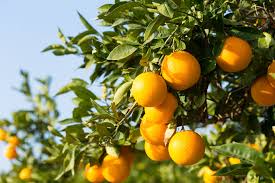Citrus species are grown principally for the juices of their fruits and for local consumption. They are rich sources of vitamin C.
Citrus cultivation is on a small scale in Nigeria. The cultivation of citrus is yet to be organised and encouraged so as to maximized the use of the various products obtainable from the fruits.
In this article, we will give you details specific to citrus production. You will be familiar with production details which apply to all members of the Genus Citrus
Site Preparation
Prepare a rich deep loamy site. Citrus will however survive and do rather well in soils to shallow and poorly aerated for other tree crops to survive. On the other hand you will find out that Citrus trees may be badly injured in soils a little more shallow and wet where mango for example would thrive.
Any site selected should be level or only slightly sloping. It should also be protected from strong winds either naturally or by the establishment of wind breaks.
Read Also: Factors that Hinders your Fishes from Growing Fast
Citrus Varieties
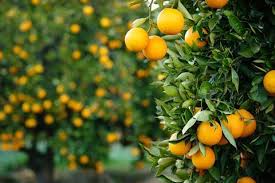
The group or Genus Citrus comprises species in which sweet orange, Grape fruit, Lemmon and Lime are included.
In the sweet orange, good varieties include Valecia, Washington Navel, King, Ibadan Sweet, Ogbomosho Sweet, Nigerian Green Sweet, Tangelo etc. In the Grape fruit, there are varieties like pink freshed forster, the seedler March and Thompson.
Nursery Practices
To prepare nursery for tree crops, you will need to select an area with a good shelter from winds. In areas of heavy rainfall, a gently sloping ground must be preferred for free drainage. Avoid water logging conditions and look for deep and well- drained soil.
Cultivate deeply and then apply fertilizers as a base dressing as follow:- Super phosphate 60g/m2, Sulphate of ammonia 30g/m2, Potash 30g/m2
You should make your seed bed to be about 1.2-2m wide and as long as practicably convenient for you. You will need to raise the bed to some 15cm above the surrounding ground level. You should be careful of using organic manure because it might introduce disease organisms.
Sow your Citrus seeds in either seed boxes or in nursery beds as single seeds spaced at 3 x 6 cm. you should prick out the seedlings when they are 3 to 6 cm in height into care baskets or poly bags which you had filled with fertile top soil.
Plant the seeds of the desired rootstock. Use rough lemon seed but could be others like sour orange etc in rows about 25cm apart on the bed and about 8cm within the row. You may drill the seeds and thin to about 8cm apart later.
Mulch the seed bed with groundnut husk or some other suitable material. Apply plenty of water but avoid undue moisture other wiser fungus disease might attack the seedlings, then trans plant to budding bed at about 4 months after sowing
The Budding Bed
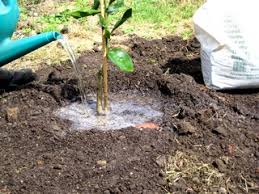
Set seedlings in rows 45cm apart and 25cm within the row. Mulch heavily with dry grass leaving a small area around each seedling to reduce the danger of disease infection from the mulching materials.
Water the plants regularly. Each plant should get about a gallon of water per week. Apply about 149 of sulphate of ammonia and 149 of muriate of potash per seedling every 8 weeks. After 7-12 months on the budding bed, the seedlings are ready to be budded.
Citrus Budding
Start budding at the beginning of the rains or at the end of the rains but not at the height of the rainy season. This is because disease organisms grow very easily during the rains, bud your material during the dry season provided watering or irrigation facilities are available. In this case you can regulate the amount of water the budded trees receive.
Budding is carried out in the cool hours of the morning or in the evening at a height of 25 to 30 cm from ground level on the prepared seedling root stock. Avoid budding during the hot hours of the day and during heavy rains.
Look after your budded stocks in the normal way until they are old enough for transplanting into the field. The Most Popular Methods of Budding used in Citrus are:-
1. Inverted “T” budding
2. “T” or Shield budding
3. Side budding”, similar to side grafting in mango has just been discovered by us in IAR, Samaru. (It is yet to be published but it is about 75-80% successful, all other things being equal.
Citrus Transplanting
You may use two methods. The “bare-root system” or the “ball of earth” method. The “ball of earth” method is better because since a lot of soil is left on the roots, transplanting shock is greatly reduced.
If the “bare root system” must be use because of transport difficulty with the “ball of earth” method the roots must be dipped in a “slurry” mixture of soil, clay and water suitable consistency. The routine transplanting methods have already been discussed in unit 5 above.
Orchard Planting
Plant your seedlings into the orchard at the beginning of the rainy season (May – June). You will dig your planting holes 1m x 1m x 75cm or as appropriate about one week before transplanting if possible.
Half-fill the planting hole with top soil mixed with rotten compost or topsoil with high organic matter content. Put the seedling in position with one operator holding it upright and in position in the hole, and the other operator being responsible for arranging the roots properly (for seedlings planted with naked roots).
After proper filling, the second operator should consolidate the soil around the seedling to ensure that air pockets are completely excluded from the zone.
Allow adequate planting distances which are essential for economic productivity of Citrus and use a recommended spacing for Citrus which is 10m x 10m.
Orchard planting is a very delicate and extremely important operation. Those to do the planting should be selected on the bases of carefulness and be trained in correct ways of planting.
Fertilizer Application
Apply Nitrogen, phosphorous, potassium and magnesium. Where the trace element has been found to be deficient (they are not normally deficient) by foliar analysis, for examples, the elements, manganese, molybdenum, Boron etc, should be supplied if necessary by spraying.
Ensure that the recommended fertilizers by the Federal Ministry of Agriculture and Natural Resources for your zone are used.
Read Also: The Most Lucrative between Production of Fish Fingerlings or Raising them to Table Size
Pruning
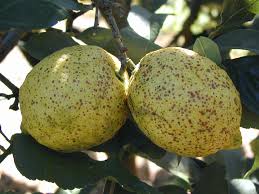
Pruning in Citrus is very important because it is likely to reduce yields if severely done. You therefore limit to removal of dead wood, overly vigorous branches and suckers.
Sometimes it might be necessary for you to remove too much dense growth to open up the trees for sunshine and wind to dry the trees in area of heavy rainfall. This will reduce the infections by gummosis and foot rot fungi.
Water Requirement
Citrus trees deplete soil water simply throughout the year; long water deficits therefore impair tree growth and fruit setting. However, some short period of water deficit is required for flower initiation.
Even though the drought may have lasted just enough to start flower induction, you will find that oranges will not blossom until the rains begin or you irrigate the orchard.
Citrus trees tend to drop their fruits excessively because of great daily water deficits especially parthenocarpic fruits (fruits which develop without fertilization) for example, Washington Navel Oranges.
It is believed in the Citrus industry that when seeds are processed with fruits in the extraction of juice, the natural sweet taste of orange is tampered with. A situation where there are no seeds in the fruit is a welcome development. Having to remove seed mechanically or manually before fruit extraction attracts extra cost.
Harvesting and Storage
Citrus begins to bear fruits from 3 to 5 years after planting in the field depending on the species, variety and method of propagation. Vegetatively propagated materials comes into earlier than seedlings.
In Citrus, color of the fruit is green when fruits are not mature, in many cases (Nigerian Green Sweet is an exception). On maturity, the fruits begin to ripen during which period the colour turns yellow.
Harvest when mature fruits with considerable green will ripen if you store at 600F without artificial treatment. (like ethylene). Only fruits that are ripe at harvest keep at low temperature like 450F.
It is very important that you do not bruise the fruits while harvesting, otherwise moulds can gain entrance and cause foot rot and this is the greatest source of loss after harvest.
Citrus fruits are easily perishable after ripening. To ensure that fruits are not lost through over-ripening, fruits should be harvested immediately they are ripe and delivered to consumers, processors or retailers. In some cases, you may need to store your fruits for some time while awaiting markets or transportation to distant markets.
Under such circumstances, you may need to harvest the fruits a short time before full ripening, the time interval between harvesting and full ripening depends on the length of time the fruits are to be stored or the length of time required for transportation.
When fruits are destined for distant markets, you should harvest when they are physiologically mature but before ripening, such fruits generally ripen a route to the market or they are treated with chemicals (ethylene, etc) to ensure uniform ripening.
Citrus Pests and Diseases
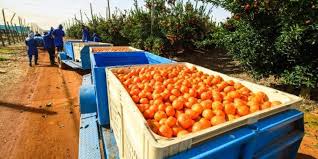
You will experience a number of insects attack on your Citrus. These include scale insects, aphids, mealy bugs, mites, fruit moths, beetles and others, use insecticides. However, in spraying citrus with insecticides you should take caution.
Certain persistent insecticides such as DDT could do more harm than good as they kill both pests, predators and parasites. Please consult a specialist before the application of chemical sprays to Citrus.
Citrus diseases may be caused by virus, bacteria, fungi, algae, nematodes and plant parasites. Citrus plants are also known to suffer from a number of deficiency diseases. Major diseases of Citrus are;
1. Tristeza- This is a virus disease of Citrus. It is not controllable but preventable by using correct root stock, e.g. Rough lemon.
2. Anthracnose- Major symptoms are leaf blight twig blight and staining. It can be controlled by spraying with copper fungicides, form sanitation and you could use resistant varieties, if any
3. Scab- It is caused by fungi. The main symptoms are whitish scabs on leaves twigs and fruits of Citrus. Major methods of control are farm sanitation; you may spray with fungicides such as Captan, Bordeaux mixture.
4. Foot rot or brown rot- This is simply known as Citrus gummosis. It is caused by phytophthora sp. It kills the bark on trunk and roots which eventually kills plants. Control is to treat plants with effective fungicides.
Minor Diseases include;
1. Sooty mould
2. Algal leaf spot
3. Mistletoe
4. Mineral deficiencies
In most cases, you do not need to worry much with the minor disease. Adequate farm sanitation will keep them in check.
In conclusion, citrus group comprises very important species that of economics and medicinal important as well being dietary nutritious.
It grows across the nation and produced all the year round. It is in international trade and exportation could bring much required hard currency to the country. Production of Citrus requires specific skills which can only come by training.
Do you have any questions, suggestions, or contributions? If so, please feel free to use the comment box below to share your thoughts. We also encourage you to kindly share this information with others who might benefit from it. Since we can’t reach everyone at once, we truly appreciate your help in spreading the word. Thank you so much for your support and for sharing!
Read Also: Everything You Need to Know About Extinction of Animals

